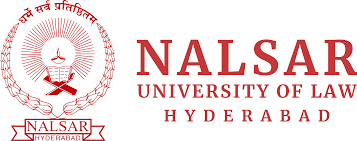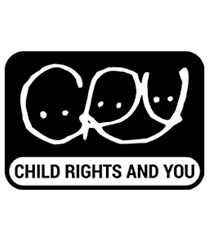RISING DIGITAL MEDIA: PSYCHOLOGICAL AND LEGAL IMPACT ON CHILDREN
By Jyotsna Valeja
ABSTRACT:
This article examines the negative impact of rising digital media on children, combining legal and psychological aspects. The issue of children using excessive digital media is not only psychological but it also has a detrimental effect on child’s rights. The research explores how social media can have harmful consequences on mental health of child and the need for laws and courts to step in to make digital world safer for children. This articles also analyses real life cases that were filed in the courts urging a complete ban on dangerous sites and applications that impacts child’s health to an extent that can lead to loss of innocent lives. This article explores the problems, reforms and legal and psychological contributions in curbing the detrimental effects of social media on children.
KEYWORDS: Child rights, digital age, cybercrime, mental health, victims, Digital rights
INTRODUCTION:
The beginning of 21st century has seen more reliance on digital world, technology and cyber space. While this helps in every field, it has also become a cause of concern seeing increase in cybercrime especially in children and teenagers. Along with mental health, excessive engagement in digital world has also affected the physical and emotional health of children. This is no longer just a mental health crisis, it has become an issue of children’s rights. The digital not just strips off children’s childhood but in some cases their lives as well. While psychology describes the harmful consequences, law needs to step in to prevent the causes.
PSYCHOLOGICAL NEGATIVE IMPACTS
There have been several studies that have taken place to understand how this digital world traps the children. Psychologists have warned how excessive and unsensible use can be detrimental to our growing youth. Courts and lawmakers have also taken these impacts into consideration in various situations.
Mental and Emotional health – Cybercrimes like bullying, sexual abuse, trolling, harassment have a very bad impact on child’s mental health. Such children have significantly higher levels of anxiety, more suicidal thoughts and behaviours, and are more likely to self-harm. The studies across the world have also revealed that the more children are engaged with electronic screens, the more likely they were to develop socioemotional problems, like anxiety, depression, aggression, fear and over-crying.
Physical health – Getting too much into social media has a significant negative impact on physical health of children, leading to decreased physical activity, sleep disturbances and eye strain. This further can cause posture problems, obesity, problems in vision and hearing.
REAL LIFE CASES:
In recent times, the incidents of cybercrimes against children have seen a big surge.
There have been several cases registered about how social media has negatively impacted child’s health and some cases even led to children taking their own lives. The most notable includes Molly Russell Case of UK and blue whale game deaths in India where children killed themselves after being exposed to depressive and self-harm content on social media.
Several cases of cyberbullying, the most common cybercrime against children, have been reported across the world with one notable case being when a 12 year old Australian girl committed suicide after being cyber bullied for months.
LAWS AND LEGAL APPROACH:
Due to evolving world and the increasing negative effects of social media, India has introduced several legislations and taken measures to protect children who become the victims of cybercrimes and other negative effects and to punish the wrongdoer.
Some prominent laws and measures taken include:
- Information Technology (IT) act, 2000 – This act addresses the types of cybercrime and lays down the punishment for those who take unauthorized access to digital world and commit cybercrimes.
- The Digital Personal Data Protection Act, 2023 (DPDPA) – The law revolves around protecting data – collection, storage and usage while safeguarding privacy. It also lays down parental consent for children to enhance privacy.
- POCSO (Protection of Children from Sexual Offences) Act, 2012 – This act lays down stricter regulations and punishment for cybercrime on children like cyber bullying, pornography and online abuse. Section 33 also direct courts to prevent aggressive questioning while dealing with children recognizing the psychological trauma.
- NCPCR (National Commission for Protection of Child Rights) guidelines for schools– NCPCR guidelines mandate schools to prevent bullying and cyberbullying by implementing policies, spreading awareness, setting up monitoring and reporting mechanisms, counselling, and legal compliance, thereby ensuring safe digital spaces for students. It also has set up an e-box initiative wherein a child can easily file online complaint about harassment and abuse, maintaining confidentiality
JUDICIAL DECISIONS
In several cases and PILs involving social media and child’s health, Indian courts have recognized the psychological impact and directed government to take necessary measures.
One such famous case was The Registrar Madras High Court, Madurai vs Union of India (2017 SCC ONLINE MAD 4735). This case dealt with a boy who reportedly took his life after engaging with the Blue Whale online game which was responsible for several other deaths. This game is described as a dangerous online challenge wherein an administrator psychologically manipulates vulnerable young individuals, prompting them to commit suicide. The Court initiated proceedings under Article 226 of the Constitution of India, issuing notices to relevant respondents and stakeholders, including government officials, police officers, mental health authorities, educational institutions, and representatives from internet service providers and social media platforms. The Court sought inputs and suggestions to address the problem through prohibition, counselling, social awareness, and monitoring of internet cafes.
In another case, Just Rights For Children Alliance vs Harish (2024 INSC 716), the Supreme Court ruled that offences against child sexual abuse and pornography are serious and any possession of the same will amount to criminal proceedings.
In the landmark judgement of Sukdeb Saha vs The State Of Andhra Pradesh (2025 INSC 893), the Supreme Court ruled that the growing suicides amongst children is a grave matter of concern and mental health comes under the ambit of article 21 of the constitution. It issued nation-wide interim guidelines obligating all educational institutions to adopt mental-health policies, appoint counsellors, create referral protocols, train staff, and establish anti-harassment mechanism.
INTERDISCIPLINARY ANALYSIS
This problem is where law and psychology need to converge. If psychologists identify the risk and its consequences, the law makers and judiciary are required to protect and prevent these risks. Countries in Europe and UK are trying to put more emphasis on such effects and curbing them. India also needs a proactive approach that directly addresses the problem, not just reactive.
SUGGESTIONS TO IMPLEMENT
Some suggestions that can prove to be beneficial in order to combat this issue include:
- Spreading legal awareness – Every child should be made aware on how to protect their digital space. This can be done on a small level by parents, teachers and also on a larger level by government and private corporations. Schools and organizations can launch legal camps and the wise use of social media should be taught through these programs, workshops and camps. Public campaigns about harmful content on social media should also take place.
- There should be a separate law ensuring children’s digital wellbeing.
- Establishing tribunals or special courts that deal with child digital rights violation specifically.
CONCLUSION:
Digital companies, psychologists, law makers, educators and judiciary need to work together to protect child’s digital rights as they are most vulnerable age group in digital world. As law always says rights without safeguards are nothing, we need to act to protect children from the darker side of social media. Several instances of right violations against children have already occurred and it really prompts us to rethink and reconsider the legal aspects that govern and protect children in the digital world.
REFRENCES:
- Avnish Bajaj vs state of Delhi, 2005(79) DRJ 576
- The Registrar (Judicial), Madurai Bench Of Madras High Court, Madurai Petitioner v. The Secretary To Government, Union Ministry Of Communications, Government Of India, New Delhi, 2017 SCC ONLINE MAD 4735
- Just Rights For Children Alliance vs Harish, 2024 INSC 716
- Sukdeb Saha vs The State Of Andhra Pradesh, 2025 INSC 893
- Olivier Hue, The Impact of Digital Devices on Children’s Health: A Systematic Literature Review, National library of medicine, 14 nov 2024, <https://pmc.ncbi.nlm.nih.gov/articles/PMC11587142/#:~:text=Digital%20device%20exposure%20affected%20physical,associated%20with%20higher%20screen%20exposure>
- American Psychological Association, Screen Time And Emotional Problem In Kids – APA Statement, June 2025
- United Nations Children’s Fund(UNCIEF), Childhood In A Digital World(2025), <https://www.unicef.org/innocenti/media/11296/file/UNICEF-Innocenti-Childhood-in-a-Digital%20World-report-2025.pdf>
- Eight-fold rise in cybercrime cases against children from 2018 to 2022: Govt, Hindustan Times, 29 Jul 2025, <https://www.hindustantimes.com/india-news/eightfold-rise-in-cybercrime-cases-against-children-from-2018-to-2022-govt-101753802012404.html>
- Nortonlifelock, Norton Cyber Safety Insights Report: Connected Kids(2025), <https://newsroom.gendigital.com/Norton-Cyber-Safety-Insights-Report-Connected-Kids>
AUTHOR’S BIO
Jyotsna Valeja is a first-year law student at Department of Legal studies, Barkatullah University, Bhopal. Passionate about legal writing, she is a published legal author who loves researching and writing legal blogs, articles and case commentaries. Her area of interest lies in criminal and constitutional law.


